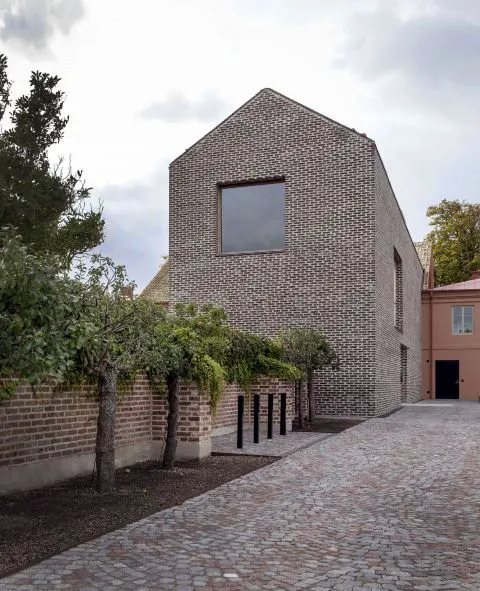Bruksgården - Lindéngruppen, Höganäs

下载所需积分: 5
林登集团的总部设在一座1805年的工厂经理官邸,此前由Höganäs AB拥有。这座建筑,布鲁克斯高登,是一个被列为国家利益地区的一部分,其中主楼及其翼被认为具有最高的文化价值。
广泛的改建展现了对历史悠久的环境的极大尊重和考虑,而扩建部分则有意识地被允许塑造成一个独特的当代印记,这是对传统地区房屋的一种改写。扩建部分是一个紧凑的雕塑体量,由砖和浇筑混凝土制成,具有明显的凹凸部分。
这个体积的质量、墙壁开口和集中的光线与主楼的砖砌相形成对比。在体积之间的接触中形成了一种联系,一个明确的情境,旧的和新的相互交融。扩建部分的材料与场地直接相关,粘土和粉刷连接到内部空间的材料性;混凝土,对建筑的质量进行了精炼,打破了尺度并与周围环境进行了对话。
项目的一个重要部分是艺术,它以有意识的方式将内部和外部空间、平面图及其组织整合在一起。在扩建部分,一个竖直的房间被放置在那里,更大的作品和装置可以进一步与体积的内部及其与花园的连接进行互动。与城市空间的关系很重要,这是一个建筑支持丰富的空间,在这里,新的附加部分被整合到当代城市中,对每一个时代的层次都表现出了极大的尊重。
Lindéngruppen have their headquarters in a factory manager’s mansion from 1805, previously owned by Höganäs AB. This building, Bruksgården, is part of an area classified as being of national interest, where the main building and its wings are considered to be of highest cultural value.
The extensive conversion show a great respect and consideration for the historically valuable environment, and the extension, a paraphrase of the traditional regional house, consciously been allowed to shape itself as a distinct contemporary imprint. The extension is a compact sculptural volume, made of brick and cast-in-place concrete, with distinct recessing and extending sections.
The mass of this volume, its wall openings and the concentrated light stand in contrast to the brickwork of the main building. A connection is created in the meeting between the volumes, a clear situation where the old and new grabs the other. The materials of the extension have a direct relationship to the site, the clay and the plaster that joins, connects to the materiality of the inner room; the concrete, and refine the mass of the building, breaks down the scale and create a dialogue with the surrounding environment.
An important part of the project is the art, which integrates the inner and outer sequences of spaces, floor plan and its organisation in a conscious way. In the extension a vertical room is placed where larger works and installations can interact further with the volume’s inner and it’s connection to the garden. The relationship to the urban space is important, a space where the architecture supports enrichments, where new additions are integrated into the contemporary town, where great respect is shown for every layer of time.